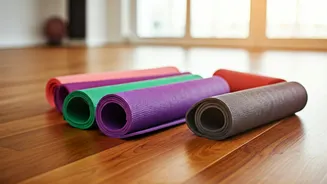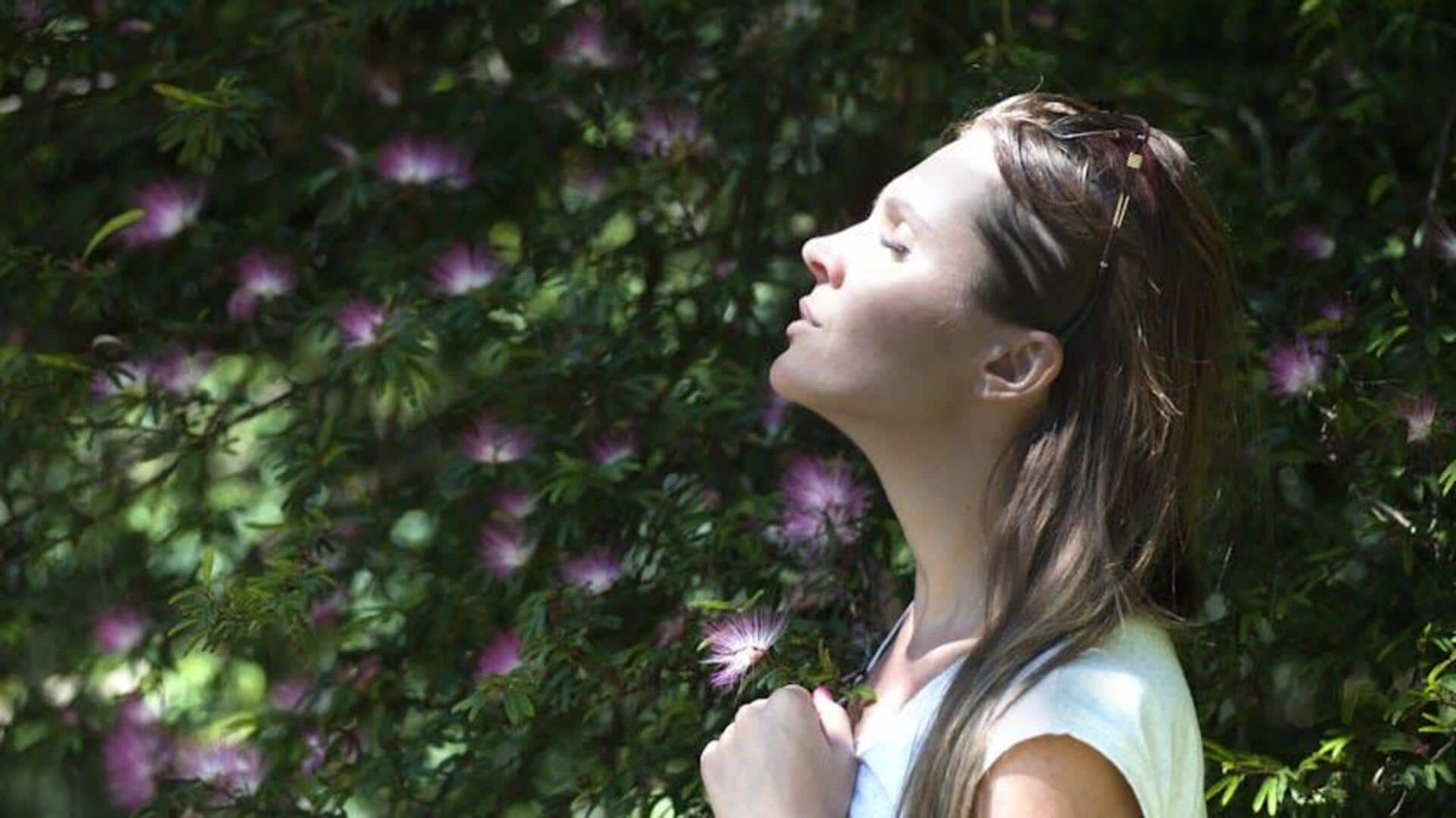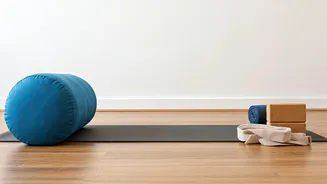Child's Pose Comfort
Child's Pose, often called Balasana, is a restful position that encourages relaxation, which can naturally reduce discomfort. To perform the pose, start
by kneeling on the floor with your big toes touching, then spread your knees as wide as your hips. Exhale as you lower your torso between your thighs, resting your forehead on the floor. Extend your arms forward, palms down, or rest them beside your body, palms up. This posture gently stretches the hips, thighs, and ankles, while also easing pain and stress in the lower back and neck. Holding Child’s Pose for a few minutes encourages calm and centered breathing, promoting a feeling of relaxation and potentially alleviating joint pain by reducing tension throughout the body. Because of its calming effect, Child's Pose also helps reduce anxiety.
Triangle Pose Stretch
Triangle Pose, or Trikonasana, provides a dynamic stretch that can contribute to relieving joint pain. Begin in a standing position with your feet wide apart, then turn your right foot out 90 degrees and your left foot slightly inward. Extend your arms out to the sides at shoulder height, palms down. Inhale deeply, and as you exhale, reach your right hand towards your right foot, allowing your left arm to extend upwards. Maintain a straight spine. This pose stretches the hips, spine, and shoulders, potentially relieving pain and increasing mobility. Triangle Pose enhances flexibility and strengthens the core, which can improve overall posture and reduce strain on joints. The pose also stimulates organs and helps reduce stress, which can contribute to pain management.
Cat-Cow Pose Benefits
Cat-Cow Pose, or Marjaryasana to Bitilasana, is a flowing sequence that increases spinal flexibility and can indirectly benefit joint pain. Start on your hands and knees, with your wrists under your shoulders and your knees under your hips. For Cat Pose, exhale and round your spine towards the ceiling, tucking your chin to your chest, and drawing your belly button in. Then, for Cow Pose, inhale and drop your belly towards the floor, arching your back and lifting your chest and gaze toward the ceiling. This sequence gently massages the spine and abdominal organs, promoting circulation and releasing tension in the back and neck. The alternating arching and rounding movements improve spinal flexibility and reduce stiffness in the back, which often contributes to joint discomfort. Practicing Cat-Cow helps to improve blood flow to the spinal column.
Warrior Pose Strength
Warrior Pose, or Virabhadrasana, not only builds strength but also supports joint health. Begin in a standing position with your feet wide apart. Turn your right foot out 90 degrees and your left foot in slightly. Bend your right knee over your right ankle, keeping your thigh parallel to the floor. Extend your arms out to the sides at shoulder height, palms down, gazing over your right hand. This pose strengthens the legs, ankles, and core, and it increases stability. Warrior Pose supports the joints, which can reduce pain and improve posture. Strengthening the muscles surrounding the joints can also provide better support, which further minimizes the risk of discomfort. This pose also enhances balance and focus.
Bridge Pose Flexibility
Bridge Pose, or Setu Bandhasana, helps to relieve joint pain through a series of actions. Lie on your back with your knees bent, feet flat on the floor, hip-width apart, and arms at your sides. Inhale and lift your hips off the floor, pressing your feet firmly into the ground and engaging your glutes. Your thighs should be parallel to the floor, and you can clasp your hands beneath your body for additional support. This posture stretches the spine and hips, easing discomfort in the lower back and promoting mobility. Holding Bridge Pose builds strength in the legs and core, while also stretching the chest and shoulders, thus reducing strain on the joints. It also opens up the chest and improves breathing.





